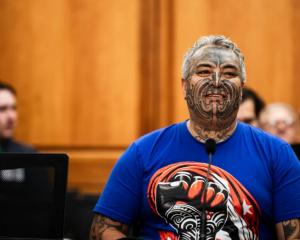
The Mental Health Foundation has issued a warning to Kiwi parents and caregivers over a distressing video circulating on social media.
Footage that appears to show a man dying from suicide has been shared on TikTok, a social media platform, has also been copied and shared on other social media platforms.
Foundation chief executive Shaun Robinson said there was "no reason whatsoever" to share the concerning video.
"Do not share this video under any circumstances," he said in a statement.
"And don't share websites or places it can be found. It puts vulnerable people at an extremely high risk of real harm."
TikTok was working to remove the footage, but it had been copied and shared elsewhere.
Anyone who may be affected by the video is urged to take a few days off from TikTok and other social media platforms, where it may continue to be shared in the upcoming days.
The social media platform is particularly popular with young people.
Chief censor David Shanks says parents need to be aware of this video so they can support their tamariki to be safe and avoid watching it.
"Social media platforms are working to delete this harmful and upsetting video, but some individuals are intentionally uploading it and spreading it," he said.
"Popular videos can appear on people's homepages without being searched for and with no warning.
"We all have a role to play to not amplify and spread this harmful video further. Even well-meaning posts expressing sadness give it more traction. Some people are posting the video in the comments of these posts."
Jared Mullen, director of digital safety at the Department of Internal Affairs strongly encouraged people not to view the video.
"If you see this video or any harmful material online, you can help take it down by reporting the incident to the online platform it is hosted by," he said.
"All social media platforms have a complaint function you can follow."
One TikTok user told the Herald she came across the video after it was suggested to her by the app.
She was shocked the "disgusting" video was still online and said it was worrying to see, as a lot of young people regularly used the platform.
"I don't know how even a bot wouldn't have picked that up, it shouldn't be online," she said.
Advice for parents
Robinson said he was very concerned that young people were becoming increasingly aware of the video, with many well-meaning attempts to caution followers not to share the video inadvertently raising awareness of the video's existence, and comments sections sharing links to websites where the video can still be found.
"Suicide is a contagious behaviour and we are deeply concerned that this video is being shared," he said.
"Viewers are likely to be considerably distressed after seeing the video. As it may have been widely viewed, the foundation has decided to speak out requesting parents, caregivers and others supporting young people take proactive steps to check in on young people and anyone who may be at risk of suicide."
There is no evidence anyone in New Zealand has harmed themselves as a result of the video but it was a risk the foundation had to be aware of and responded to, Robinson said.
"Young people are aware of and talking about this video. Some may be distressed by it, others may be intrigued and seeking out ways to find it," he said.
Young people used social media differently to adults and will almost inevitably encounter material related to mental health, self-harm and suicide, he said.
"As adults it's our job to ensure they are supported to talk about things that concern them and access any help they need."
Robinson urged parents and caregivers to closely monitor their children's social media, particularly at the moment, while the video still may be circulating.
"You don't need to mention the video, but it's never a bad time to check in," he said.
"It's up to us to bridge the gaps between adults and rangatahi and ensure we're there to help."
"Social media can be a huge positive for many young people – banning it isn't the answer. We need to ensure young people feel they can safely talk to the adults in their lives about distressing things they have seen or heard without fear of punishment or losing access to social media."
Netsafe CEO Martin Cocker said resources were available for parents and teachers on the organisation's website.
"Sometimes young people may find things they never intended to look at online," he said.
"If tamariki are exposed to something that upsets them, it can be hard to know how to navigate this situation which is why we've developed advice to support parents and schools."
People wanting to support a young person that has been exposed to upsetting content can find advice on Netsafe's website, as well as information on how to keep tamariki safe online.
Where to get help
If it is an emergency and you feel like you or someone else is at risk, call 111.
• Lifeline: 0800 543 354, available 24/7
• Suicide Crisis Helpline: 0508 828 865 (0508 TAUTOKO), available 24/7
• Youth services: (06) 3555 906
• Youthline: 0800 376 633
• Kidsline: 0800 543 754, available 24/7
• Whatsup: 0800 942 8787, available 1pm to 11pm
• Depression helpline: 0800 111 757, available 24/7
• Rainbow Youth: (09) 376 4155
• Helpline: 1737












